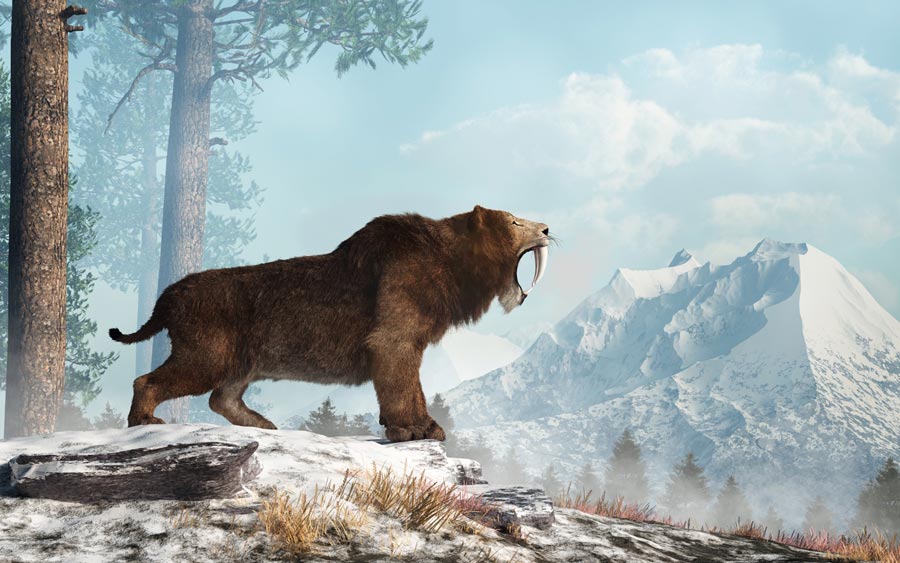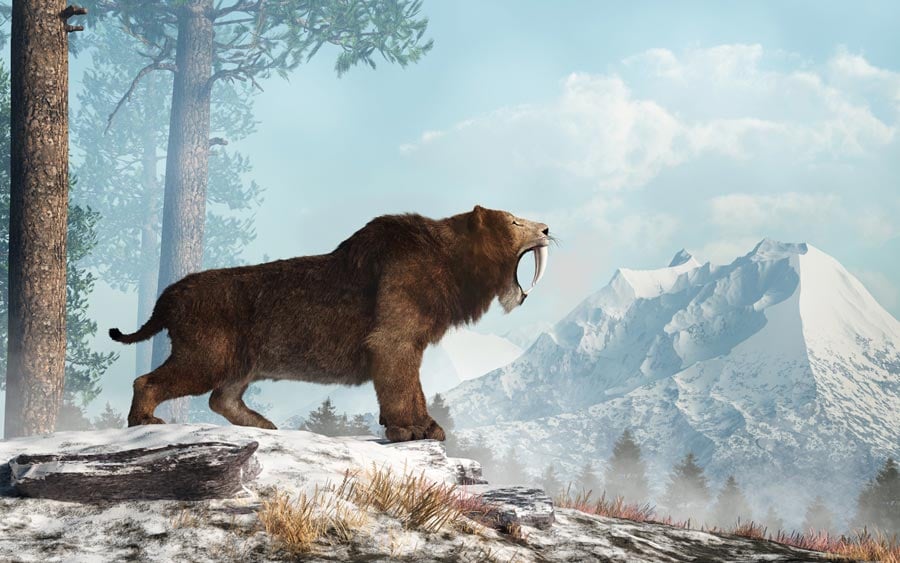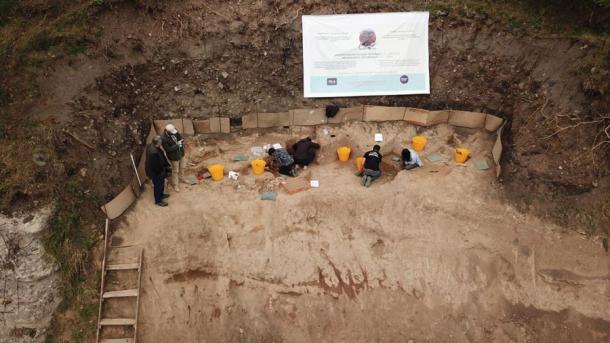

Homo erectus, literally upright man, is an extinct species of archaic human from the Pleistocene, first occurring 2 million years ago, and is widely identified as the first recognizable members of the genus Homo. In 2019, at the site called Orozmani, in Georgia, sustained excavation work and research has revealed artifacts and the fossilized remains of animals, including saber tooth cats, suggesting a new origin for the ancient Homo erectus, outside the African continent, reports Agenda. The finds support the radical thesis that Homo erectus was the first hominin to reach Eurasia.

Excavations at the Orozmani site, seen here, have unearthed animal remains, such as the saber-tooth cat, alongside crude Palaeolithic stone tools. (Giorgi Bidzinashvili / Georgian National Museum)
Orozmani Site Yields Saber-Tooth Cat Fossils
The site is situated on the banks of the tributary of the Mashavera River, which flows through southern Georgia. This early Pleistocene site is located 120 kilometers (74.5 miles) away from the capital, Tbilisi, but what is particularly interesting is that it is 20 kilometers (12.4 miles) from Dmanisi, which is the site widely recognized as the birthplace of the earliest known hominins out of Africa, about 1.8 million years ago – also the Homo erectus! Scientists credit the newly discovered material for “completely changing [the previous] understanding of the Orozmani site.”
The site has been under the joint exploration of Georgian and American scientists and students since the month of October, under the tutelage of Giorgi Bidzinashvili, a leading archaeologist at the Georgian National Museum (GNM). In addition to this, their efforts have been rewarded with the discoveries of well-preserved animal remains, as per a report released by the GNM.
These animal remains are the early Pleistocene fossils of the saber-tooth cat, Homotherium, along with other stone tools – the initial finds from a survey test pit in 2019, as reported by Haaretz. But that’s not all. Over the last 2 years, to add to the mix, fossil remains of more saber-tooth cats, bones of elephant, deer, horse, bovid, antelope, wolf, and the fossilized feces of hyenas, called coprolites.

Serrated fang of saber tooth tiger, Homotherium, found at Orozmani site in Georgia. (Giorgi Bidzinashvili / Georgian National Museum)
Olduwan Tools Found Alongside Saber Tooth Cat Fossils
The tools were identified as belonging to the Olduwan industry – crude Palaeolithic pebble and stone tool work from 2.6 million years ago, which followed no recognizable or standardized pattern. It was one of the least sophisticated forms of tool work, and was eventually replaced or supplanted by other techniques. The name is borrowed from one of the most crucial paleoanthropological sites, called Olduvai Gorge in Tanzania, discovered by British-Kenyan archaeologist duo Mary and Louis Leakey, in the 1930s.
In 2019, two flakes and one hammer stone, recognizably Olduwan style, were discovered at the Orozmani site. Owing to the pandemic, the dig was finally resumed with the necessary vigor only in the summer of 2021, but has so far achieved spectacular results and finds. Enthusiastic local and international participants, armed with brushes and picks, took part in this dig, discovering more tools (flakes, cores, and hammer stones) and animal fossil remains.

The archaeologists at Orozmani in Georgia also found stone tools. (Giorgi Bidzinashvili / Georgian National Museum)
Did the Saber Toothed Cat Clash with Homo Erectus?
The most fascinating of the animal finds was the Homotherium, a predatory saber-toothed cat (or scimitar-toothed cat), that inhabited North America, South America, Eurasia, and Africa from 4.5 million years ago, till the waning of the last Ice Age, which was roughly 11,500 years ago. It was the size of a male African lion, weighing 190 kilos (420 pounds) and was at a height of 1.1 meters (3 feet and 7 inches) with shorter upper canine teeth suited for slashing rather than purely stabbing.
This predator, the researchers posit, actually came into competition with homo erectus over meat and territory. Homo erectus was a dedicated carnivore, with high degrees of meat consumption. There is a possibility that the hominin clashed with the saber-toothed cat, and the remains of the predatory beast are an example of early hunting.
To tie up with this theory, five hominin fossils have been found at the neighboring site of Dmanisi – that of the h. erectus georgicus from 1.8 million years ago. This coincides with the climate of the earth becoming more volatile, possibly acting as a driving force behind the competition between both species.
Fascinatingly, one of these hominins was an old toothless adult, who likely required the help of fellow hominins for the purposes of chewing, similar to the finds of a Neanderthal adult found in Iraq. This is an insight into early social behavior. Further research and analysis at the Orozmani site is required to illuminate us about the cognitive processes that shaped the behavior of our ancestors.